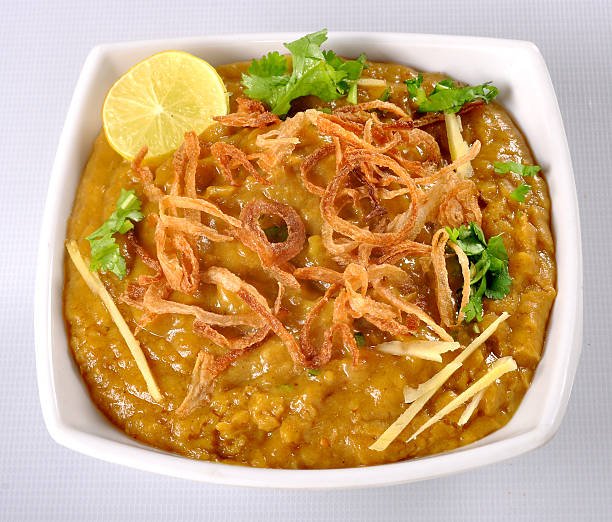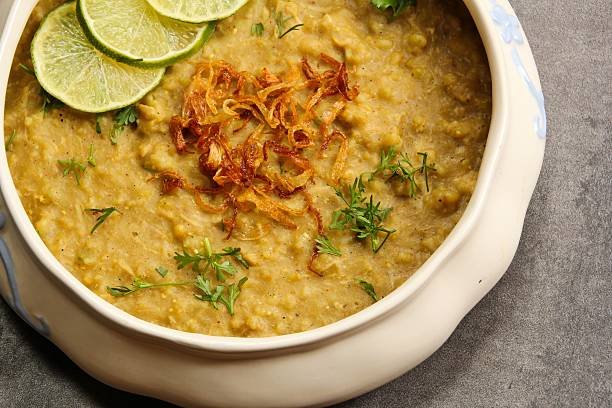Dear friends,
Today I am here to share with a famous delicacy of Hyderabad,' Haleem;' Before that, I would like to share with you the story related to the dish. It is believed that haleem is actually an Arabic delicacy.
In Hyderabad, this delicacy was introduced by Nizam Mahbub Ali Khan. Later this dish became popular during the seventh Nizam(Mir Osman Ali Khan's) court. Haleem was first known as Harees.
Sultan Saif Nawaz Jung Bahadur, an Arab chief, was among the seventh Nizam's palace aristocracy, universalized Haleem in Hyderabad. It is a sort of meat ragout and is cooked especially in Hyderabad during the month of Ramadan. In 1956 Aga Hussain Zabeth(Iranian founder) of Madina Hotel; was formally prefaced Hyderabadi haleem. Madina hotel is one of the earliest restaurants in Hyderabad. Madina hotel was unveiled by Mir Osman Ali Khan in 1956, after the restoration of the hotel. I hope you like the information behind the dish. So, let's start making 'Haleem.'
Ingredients:-
- Mutton- 1kg. large size pieces (with bone). There should have some fat in the mutton pieces.
- Barley- 4tbsp.
- Dalia(Broken wheat)- 50g.
- Split skinned black gram(Urad dal)- 2-1/2tbsp.
- Bengal Gram- 2-1/2tbsp.
- Red lentil- 50g.
- Yellow split pigeon peas(Toor dal)- 2-1/2tbsp.
- Split yellow lentils(moong dal)- 2-1/2tbsp.
- Basmati Rice- 50g.
- Cashews- 8(crushed).
- Almonds- 8(crushed).
Spices for marination:-
- yogurt- 200g.(home made).
- Black pepper powder- 1tsp.
- Garam masala powder- 1tsp.
- Red chili powder- 1tsp.
- Turmeric powder- 1/2tsp.
- Ginger paste- 2tbsp.
- Garlic paste- 2tbsp.
- Lemon juice- 1/2 tsp.
- Salt- To taste.
Other spices for haleem:-
- Ghee(clarified butter)- 200g.
- Cinnamon stick- 1 inch.
- Green cardamom- 4-5pods.
- Cloves- 1/2tsp.
- Black peppercorns-1/2tsp.
- Caraway seeds- 1tsp.
- allspice(kebab chini)- 1/2tsp.
- Onions- 4medium(thinly sliced).
- Coriander leaves- 1cup(chopped).
- Mint leaves-1/2cup(chopped).
- Green chilies- 4-5 slit.
- Lemon juice- 4tbsp.
Preparation Method:-
Step 1- First, rinse all grains couple of times. Now take a large mixing bowl and soak all grains in sufficient water for about 4-5 hours.
Step 2- Clean mutton pieces well and marinate with yogurt, salt, turmeric powder, ginger paste, garlic paste, red chili powder, black pepper powder, garam masala powder, lemon juice. Mix all ingredients well with mutton. Cover the bowl and keep in the refrigerator for 1 hour.
Step 3- Place a wok on medium flame. Add 100 grams of ghee. Once ghee will start melting, fry the sliced onion(2nos) until brown. Take out brown fried onions in a bowl and set aside. Keep the remaining ghee in the wok for further use.
Step 4- Now, take a deep bowl and add sufficient water. Add soaked grains, salt. Keep the flame high for 10 minutes; once the water will start boiling, lower the flame, and cook all the grains until all the water evaporates and lentils will become soft.
Step 5- Once all grains are cooked, let them cool and make a paste with them.
Step 6- Return the wok on the flame. Add remaining ghee. Once ghee will start melting, Add whole cinnamon stick, cloves, green cardamom, black peppercorns, caraway seeds, Kabab chini. Stir for few seconds until aromatic.
Step 7- Next, add the remaining finely sliced onion. Saute till onions become soft. Now add the marinated mutton and cook on high flame for about 10 minutes till the raw aroma goes away.
Step 8- Next, add half portion of chopped coriander leaves and mint leaves. Mix well.
Step 9- Transfer the mutton to a pressure cooker. Add sufficient water. Stir once and close the lid of the pressure cooker.
Step 10- Place the pressure cooker on the high flame for the first 5 minutes. Then lower the flame, and cook mutton until mutton starts separated from the bones.
Step 11- Once Mutton cooked well, transfer mutton pieces in a large bowl. Separate bones from the mutton. Take out 4-5tsp of ghee from the gravy and keep aside.
Step 12- Mash the cooked mutton with a masher and transfer them into the gravy once again. Place the cooker back to the flame. Add lentil paste, coriander leaves, mint leaves, black pepper powder(1/2tsp), garam masala powder(1/2tsp), ghee(1tsp), half a portion of fried brown onions(beresta). Combine all ingredients well.
Step 12- Lower the flame. Stir continuously with the masher for about 15-20 minutes. Once, the haleem will become thickened. Turn off the flame.
Step 13- Transfer Haleem in a serving bowl. Garnish with coriander leaves, mint leaves, remaining beresta(fried browned onions), and lemon juice.



Comments
Post a Comment